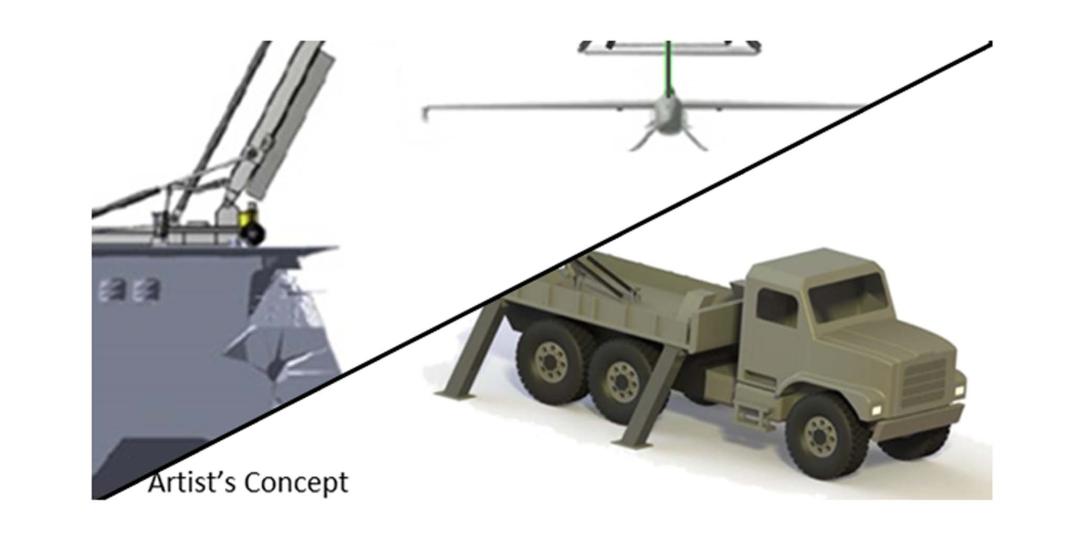DARPA's SideArm Project Helps Aircraft Stop Short
A full-scale technology demonstration system that repeatedly captured a 400-pound Lockheed Martin Fury unmanned aerial system (UAS) accelerated to representative flight speeds via an external catapult. The test was part of the DARPA's SideArm research, which focuses on creating a self-contained, portable apparatus that can horizontally launch and retrieve UASs that weigh up to 900 pounds.
A full-scale technology demonstration system that repeatedly captured a 400-pound Lockheed Martin Fury unmanned aerial system (UAS) accelerated to representative flight speeds via an external catapult. The test was part of the Defense Advanced Research Projects Agency’s (DARPA’s) SideArm research, which focuses on creating a self-contained, portable apparatus that can horizontally launch and retrieve UASs that weigh up to 900 pounds.
SideArm is an offshoot of the agency’s Tactically Exploited Reconnaissance Node (TERN) project, a joint program between DARPA and the Office of Naval Research. The system’s launch and capture equipment is combined into a single rail that folds for transport. As a result, it fits in a standard 200-foot shipping container for transport by truck, ship, rail, C-130 aircraft and CH-47 heavy-lift helicopter. In addition, it is designed to enable rapid setup and controlled decelerations and adapt to current and future UASs.
“SideArm aims to replicate [aircraft] carriers’ capability to quickly and safely accelerate and decelerate planes through a portable, low-cost kit that is mission-flexible, independent from local infrastructure and compatible with existing and future tactical unmanned aircraft,” says DARPA Program Manager Graham Drozeski. “We are pleased with the progress we’ve made enabling a wide variety of sea- and land-based platforms with persistent intelligence, surveillance, and reconnaissance and strike capabilities.”
The system is capable of recovering aircraft up to 1,100 pounds, exceeding DARPA’s design objectives.





Comments